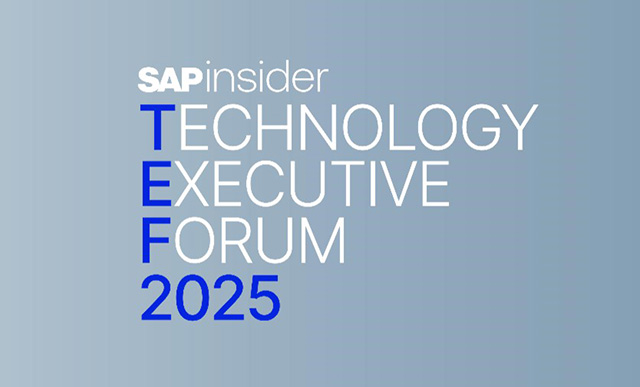Dodge Industrial has adopted SAP Datasphere to centralize and streamline its data management process. The company significantly simplified its architecture with a more agile approach that facilitates analytics for both SAP and non-SAP BI tools.
At SAPinsider Las Vegas 2025, Michelle Orozco, CI Project Manager at Dodge Industrial and Jonathan Haun, Sr. Director, Technology Consulting at Protiviti, shared the path that Dodge took to effectively streamline its data management, and the benefits that they realized as a result.
Dodge Industrials Overview and Project Background
Dodge Industries has been a prominent name in the power transmission industry since its founding in 1878. They design and manufacture a diverse range of products, including bearings, gears, drives, and sensors, catering to numerous sectors such as paper, metal processing, air handling, and food and beverage. Rather than being a low-cost leader, they position themselves as a feature-rich total cost of ownership (TCO) company.
In 2007, Dodge joined Baldor Electric and began integrating their data management processes together. This merger brought together mature and well-structured business data warehouses, but also a requirement for significant custom coding which oftentimes undermined trust in data.
The Legacy Architecture Challenge
Prior to using SAP S4/HANA, Dodge faced significant challenges with the management of data. The company’s users often found themselves dealing with numerous inefficiencies and workarounds, including manual processes and extracts. The architecture was fragmented, requiring various skill sets to navigate the myriad of data sources and transformations.
Additional challenges included:
- Underutilized and misunderstood business intelligence system.
- High reliance on manual data extraction and transformation processes.
- Multiple points of ETL leading to inefficiencies and discrepancies in data integrity.
Drivers for Change: Migration to Datasphere
Dodge's primary impetus for transitioning to SAP Datasphere revolved around the desire for real-time analytics capabilities, which ultimately meant transforming their traditional ETL processes into more agile, on-the-fly transformations.
Project Goals
Accrding to Michelle and Jonathan key project goals included:
- Improved Data Governance: Implementing organic features like cataloging, lineage, and metadata management to enhance their data governance framework.
- Scalability: Expansion of CPU, memory, and storage to meet fluctuating demands.
- Centralization of Data: Establishing a unified platform to model and access all data, enabling streamlined insights and transformations.
- User-Friendly Interface: Ensuring that our non-technical users could easily navigate and derive value from the platform.
Why Datasphere?
Dodge selected SAP Datasphere based on its ability to unify data and analytics within a single framework. It offers broad integration capabilities with both SAP and non-SAP systems, making it a future-proof solution, essential for analytics and data modeling.
Implementation Strategy and Team Structure
Dodge adopted a phased approach to the implementation, which included:
- Phase Zero Assessment: This crucial initial phase involved cataloging existing data landscape and understanding what needed to be re-engineered. This helped them provide an accurate estimate for implementation timelines.
- Collaboration with Protiviti: Dodge partnered closely with Protiviti to leverage their expertise and the Protiviti Accelerator to streamline our adoption of Datasphere.
- Agile Project Management: Dodge structured their project team to include both Dodge and Protiviti resources, ensuring that Dodge personnel were deeply involved in the process. The aim was for Dodge to be fully self-sufficient by project completion.
Key Lessons Learned
As with any significant transformation project, they encountered both successes and challenges that offered valuable insights:
- Importance of Documentation: Documenting the current landscape is critical to understanding legacy architectures and identifying pain points.
- Synchronization with S/4HANA: Maintaining alignment between the Datasphere implementation and the S/4HANA project was essential, although it posed some challenges.
- Resource Allocation: Familiarity with advanced concepts, such as Change Data Capture (CDC), is crucial in working.
What this means for SAPinsiders
Dodge Industrials is a large organization. This makes increased visibility and tight decision-making a must. Dodge International is an enormous organization with amount of data. The company is involved with numerous trading partners and goes to market with a wide and diverse range of product lines. Organizing and synchronizing data is a must not only to support their existing infrastructure, but to support aggressive future-planning as well. Dodge knew that organizing their data would be a significant challenge. They also recognized the necessity for improved data governance, scalability, data centralization was a necessity. With this in mind, Dodge selected SAP Datasphere based on its ability to meet these goals within a single framework. It offers broad integration capabilities with both SAP and non-SAP systems, making it a future-proof solution, essential for analytics and data modeling. The result was a centralized and data management process. The company significantly simplified its architecture with a more agile approach that facilitates analytics for both SAP and non-SAP BI tools.
Establishing a user-friendly experience is a key requirement for Dodge. Dodge's focus was on optimizing existing data and analytics in the face of underutilized and misunderstood business intelligence systems, high reliance on manual data extraction and transformation processes, and multiple points of ETL leading to inefficiencies and discrepancies in data integrity. In order to get there, however, these optimized analytics would need to be easily understood and actionable by many different stakeholders along the supply chain. Indeed, it is critical that a user-friendly experience must be in place for different people with different backgrounds, all in the name of a faster and more efficient supply chain operation.
SAP Datasphere provided Dodge a great opportunity for optimization... and they took it. Dodge is a large organization with many sources of data. Harmonizing data across their sprawling organization was a necessity. SAP Datasphere was the right solution for them at the right time, focusing on data integration, cataloguing, modeling, warehousing, virtualization and much more. Dodge analyzed their needs, partnered with Protiviti for the implementation, and moved forward. So far, the opportunity to work with SAP has yielded both short-term and long-term benefits. 







